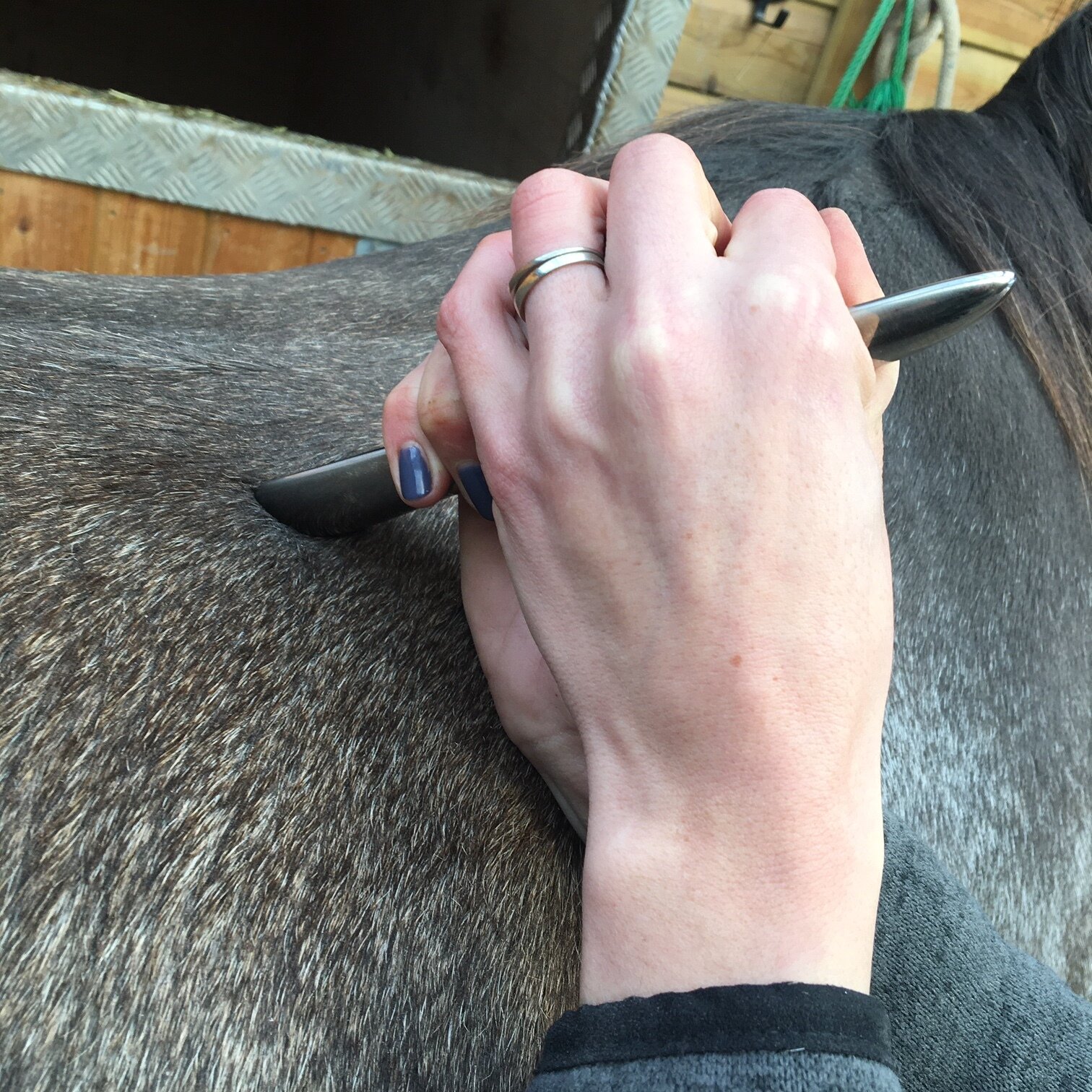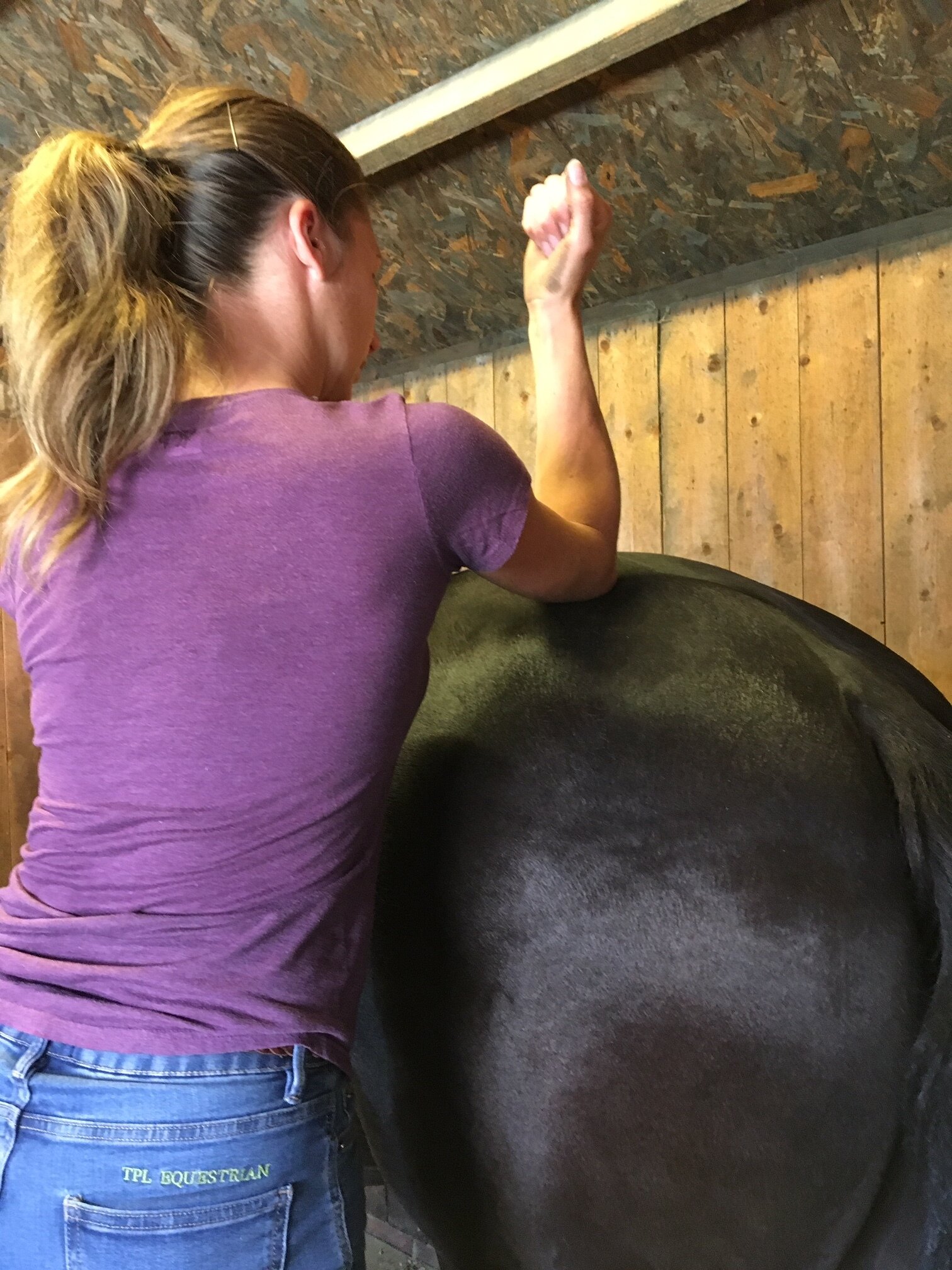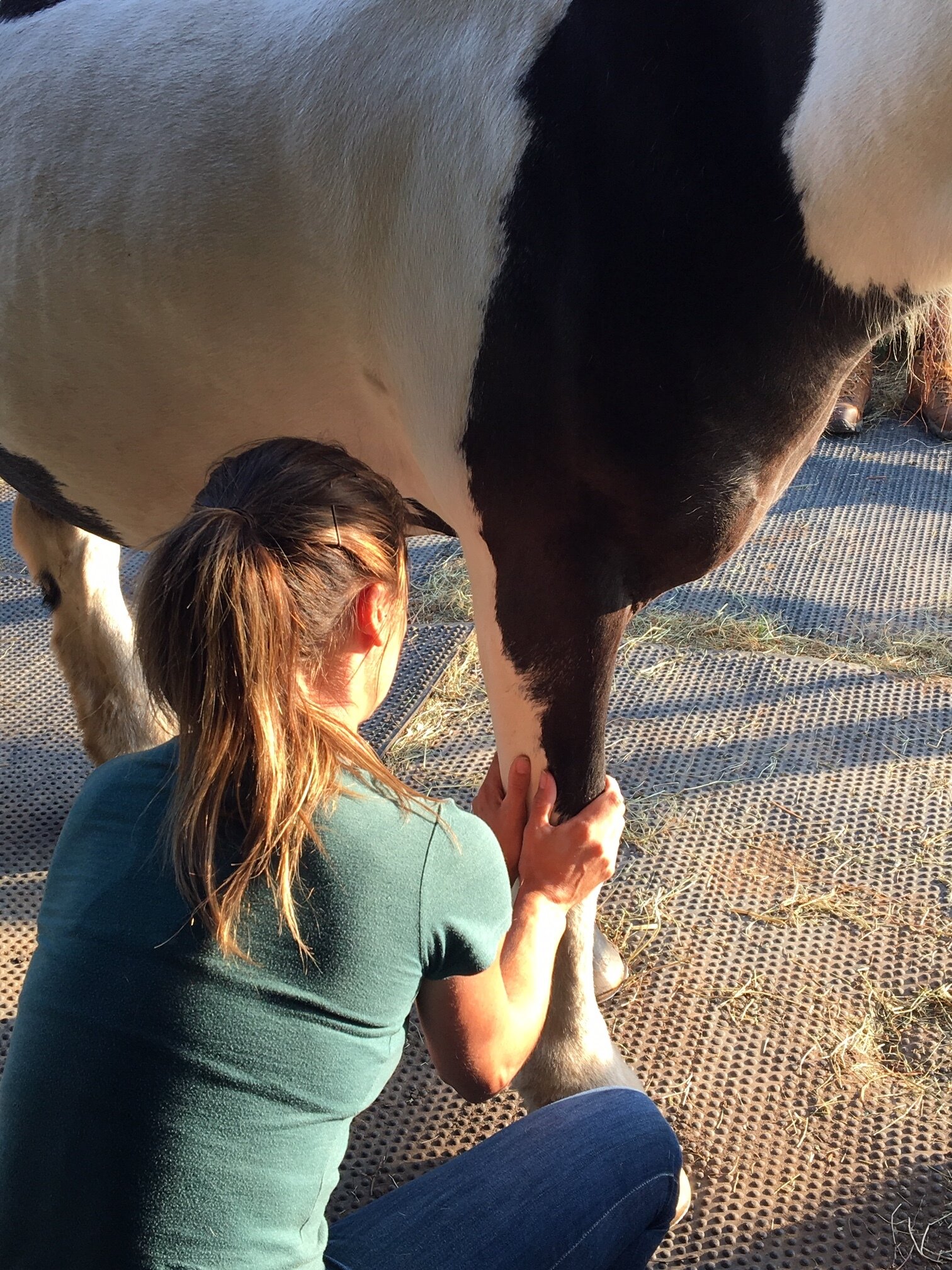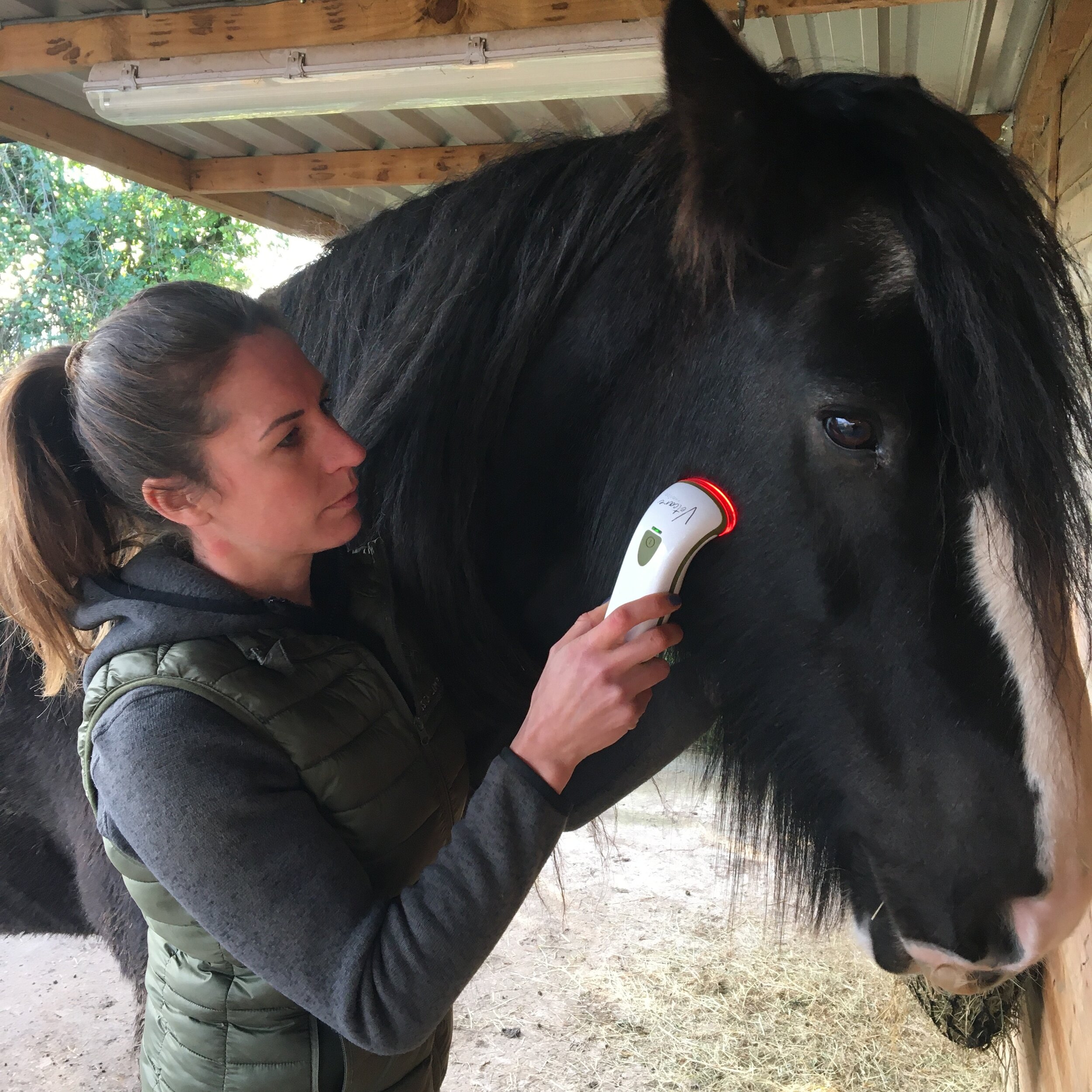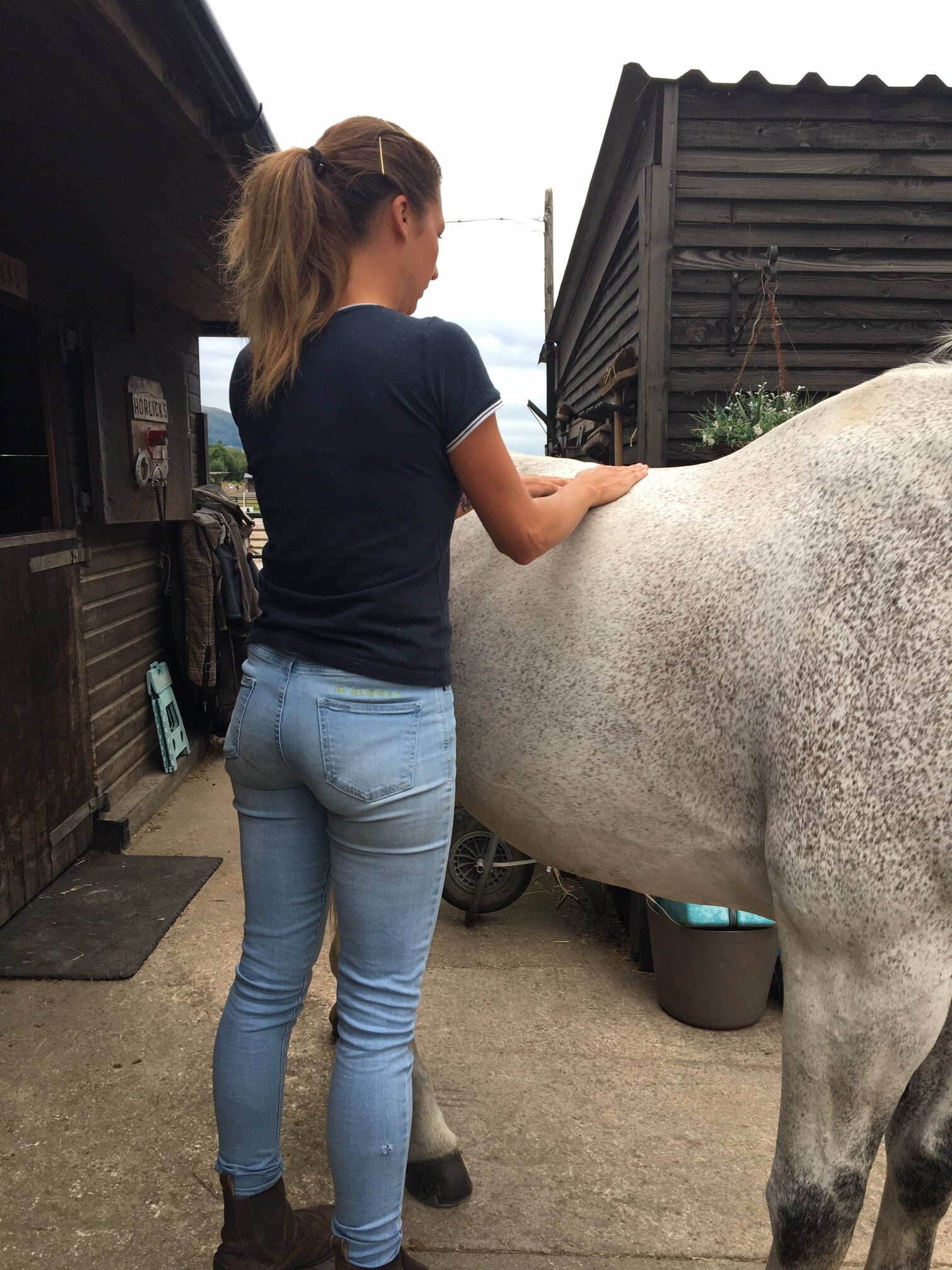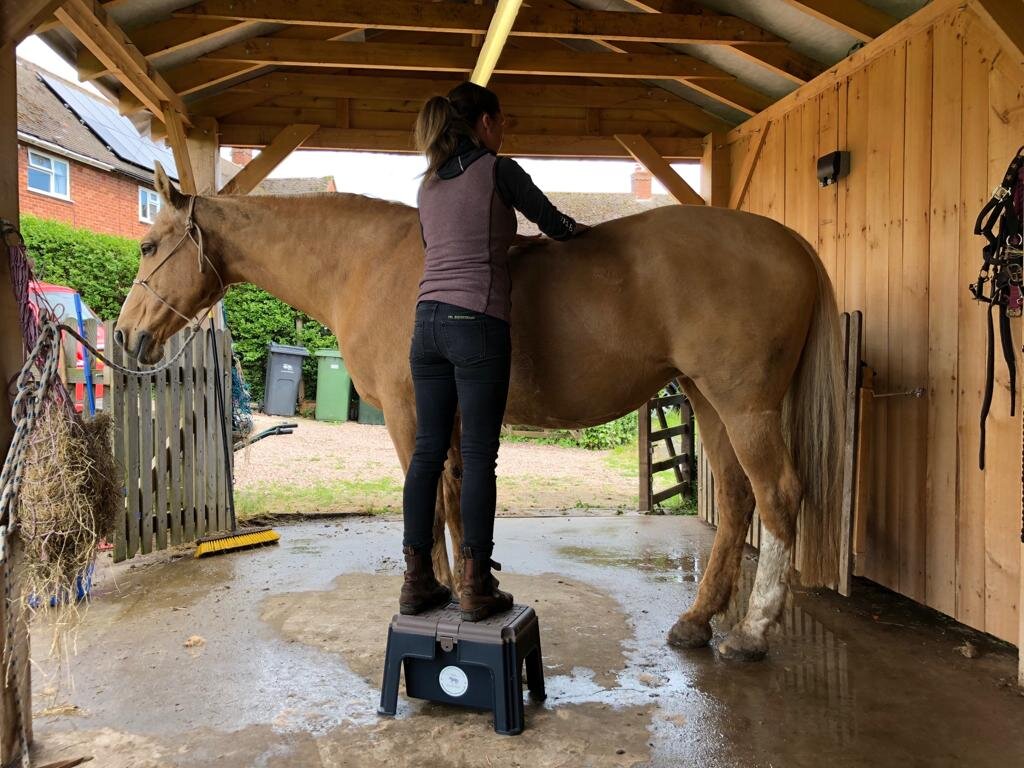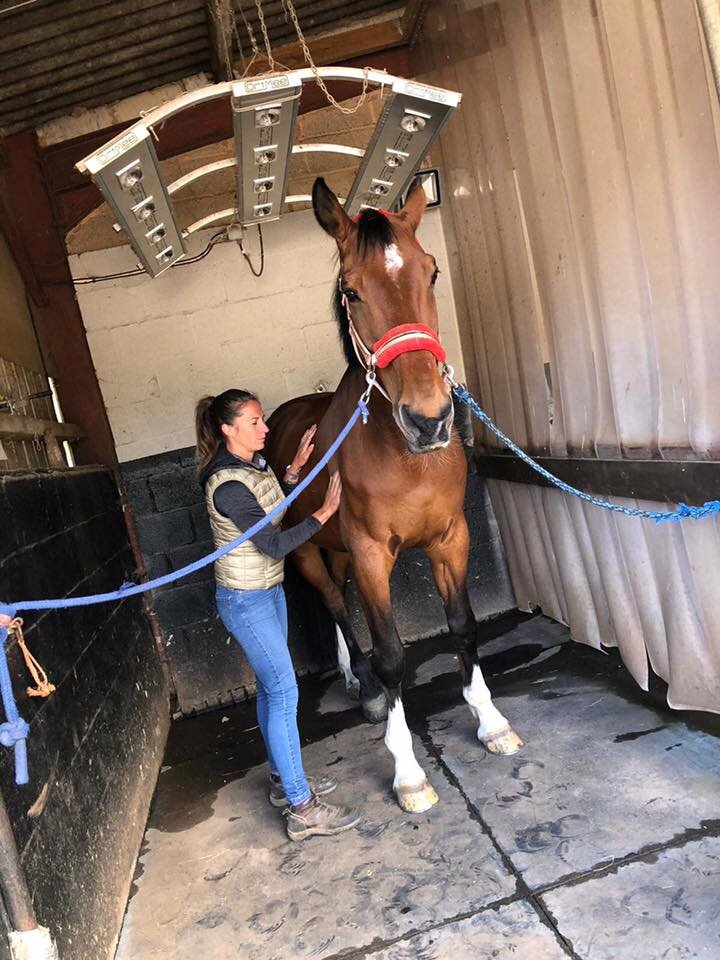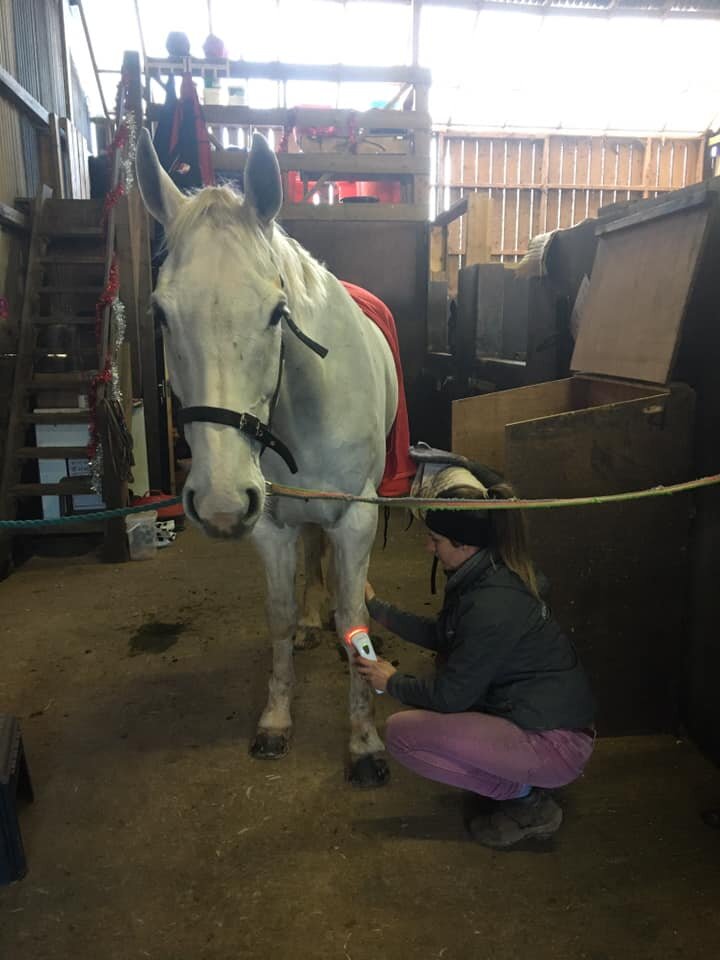Introduction to The FascialEdge®
The FascialEdge® was designed and produced by human and animal chiropractor; Andrew Glaister. Many prototypes were trialled in production, leading to the creation of a tool that is highly effective in quickly releasing restrictive fibrosed tissue, particularly fascia.
Jess has been fortunate enough to have some one-to-one training with Andrew himself on how to use the tool and it’s multiple applications.
Application
The FascialEdge® simply acts as a prosthetic extension of the Jess’ own hands.
The tool is guided over the target tissues using a light relaxed hold.
The long curves and profiles of the tool allow a perfect ‘fit’ to the major tissue planes and anatomical features of the horse.
The tool can be used for sweeping massage strokes over broad areas of the body and for slow, deep lateral stretching to generate ‘tangential-forces’ to stimulate sympathetic nervous system activity.
Benefits
The main benefits of using the The FascialEdge® are that the Jess is able to work a little deeper into the larger more dense muscles of the horse to help break up fibrosis and restore normal circulation to the tissues.
With the tool Jess can perform:
Superficial Myofascial Work
Allowing her to stretch the myofascia (connective tissue beneath the skin that surrounds the muscles). This feels nice and is relaxing for the horse, and results in deep reflex relaxation of the muscles.
The tool helps Jess to create a tissue rolling action (those of you familiar with Bowen therapy will know what this is). This action stimulates receptors in the superficial fascia and the skin, decreasing tension, increasing flexibility and increasing healing.
Release fixed or blocked spinal joints
Restricted myofascial tissues can pull your horse’s skeletal structure out of alignment. These tissues are also frequently facilitated as a consequence of a spinal subluxation or a blockage. Releasing them will help to put your horse’s skeletal structure back in balance.
Deep Myofascial Work
Work on residual deep fibrosis and adhesions including scar tissue and release of trigger points in the myofascia, which can be very sensitive and painful to the horse if not located and released.




